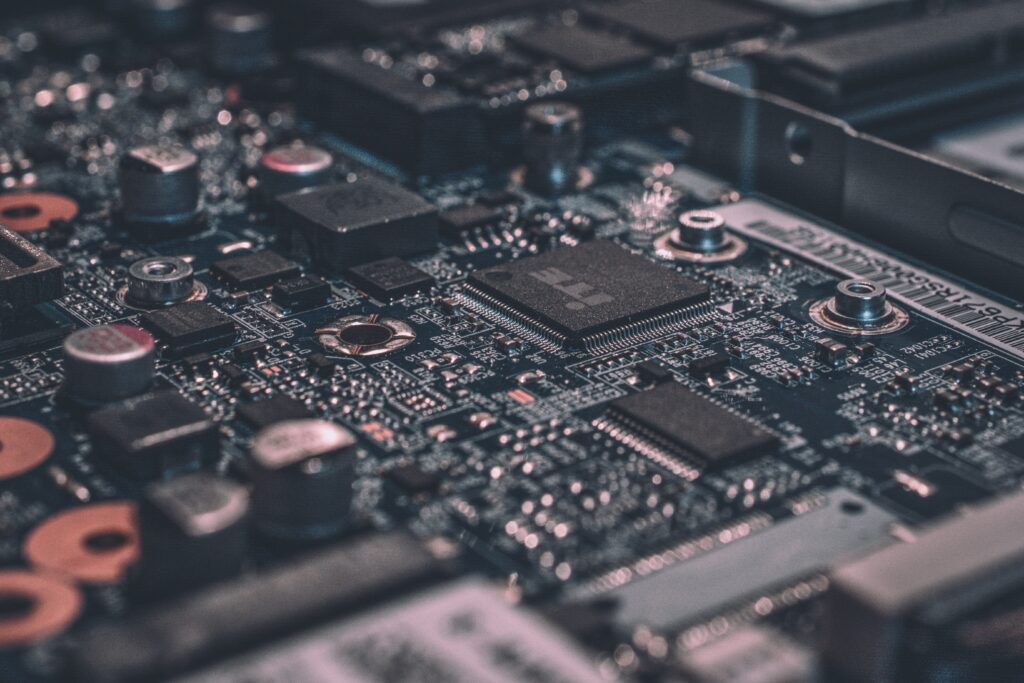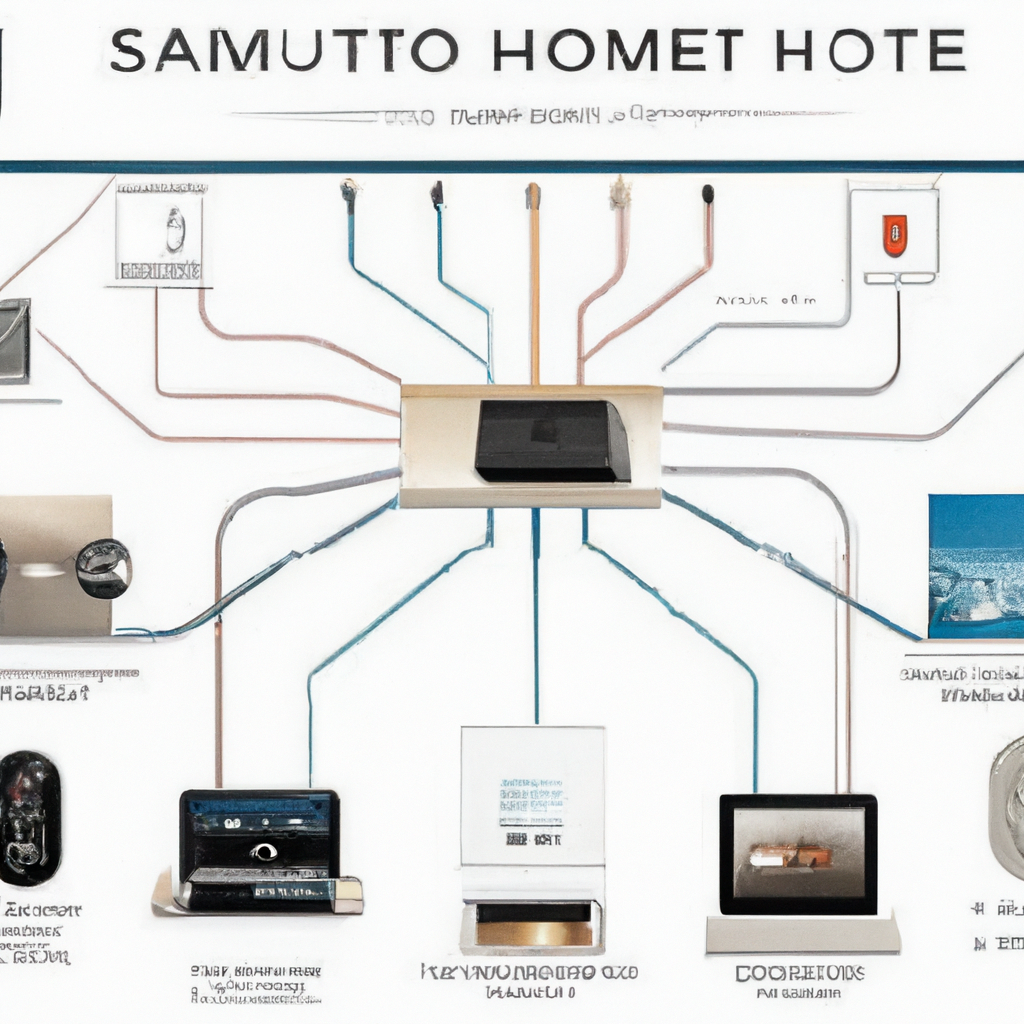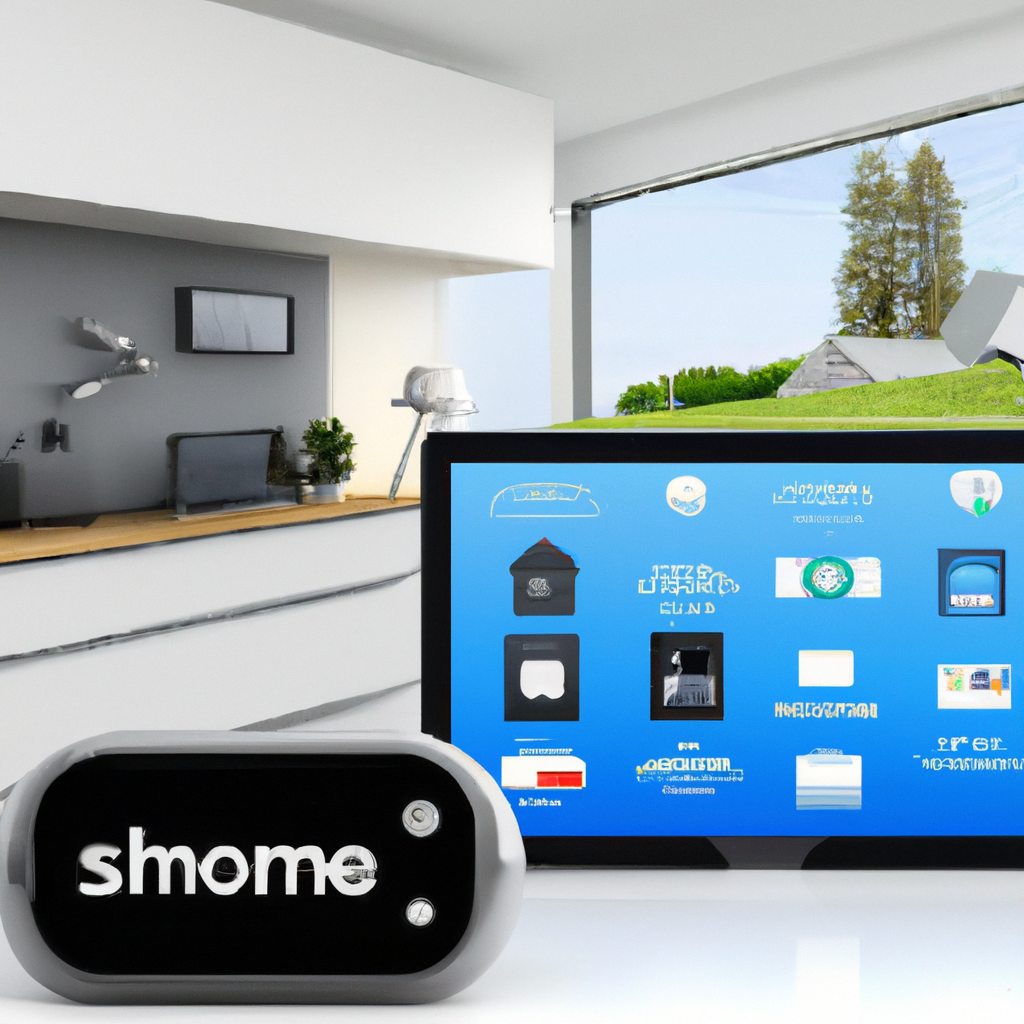So, you’re curious about the key components of a smart home automation system? Well, you’ve come to the right place! In today’s fast-paced world, the idea of a smart home has become increasingly popular and with good reason. With the advancements in technology, it is now possible to control various aspects of your home with just a few taps on your smartphone or a simple voice command. But how does it all work? In this article, we will explore the essential components that make up a smart home automation system, giving you a better understanding of this innovative technology.

What is a Smart Home Automation System?
A smart home automation system refers to the integration of various devices and technologies within a home to create a more convenient and efficient living environment. It allows you to control and automate different aspects of your home, such as lighting, security, entertainment, and more, using a central hub or a mobile application.
Definition
A smart home automation system is an interconnected network of devices, sensors, controllers, and software that work together to enable the automation and remote control of various household functions. It utilizes advanced technologies, such as artificial intelligence, machine learning, and the internet of things (IoT), to provide homeowners with increased convenience, energy efficiency, and security.
Benefits
The benefits of a smart home automation system are countless. Firstly, it enhances convenience by allowing you to control and monitor various aspects of your home remotely. Whether you’re adjusting the lights, setting the thermostat, or checking the security cameras, you can do so from the comfort of your couch or even when you’re away from home using a mobile application.
Secondly, smart home automation systems offer increased energy efficiency. By integrating energy monitoring tools, such as smart thermostats and lighting controls, you can optimize your energy usage and reduce utility bills. These systems also allow for automated scheduling and adaptive control, ensuring that energy is used efficiently.
Another significant advantage of a smart home automation system is improved home security. With the integration of security sensors, cameras, and door locks, you can remotely monitor and secure your home. Receive instant alerts when someone enters your property or when unusual activity is detected, giving you peace of mind while away from home.
Furthermore, smart home automation systems promote integration with other systems and devices, such as entertainment systems and voice assistants, allowing for seamless control and interaction between different technologies within your home.
1. Central Hub
Function
The central hub serves as the brain of a smart home automation system. It is a device that connects and controls all the smart devices, sensors, and controllers within your home. The central hub acts as a command center, allowing you to manage and automate various aspects of your home from a single interface.
With a central hub, you can control the lights, adjust the thermostat, lock or unlock doors, monitor security cameras, and perform other functions using a mobile application or voice commands. The hub ensures that all your devices work together harmoniously and allows for easy integration with other systems, such as entertainment systems or voice assistants.
Connectivity Options
Most central hubs utilize wireless connectivity options, such as Wi-Fi or Bluetooth, to communicate with the smart devices and sensors within your home. This wireless connectivity allows for easy installation and flexibility in device placement. However, some hubs also support wired connectivity options, such as Ethernet or Zigbee, for more reliable and secure communication.
2. Smart Devices
Types of Smart Devices
There is a wide range of smart devices that can be integrated into a smart home automation system. Some of the most common types include:
Smart Lighting: These devices allow you to control the brightness, color, and scheduling of your lights remotely. You can create custom lighting scenes or set up automated lighting based on specific triggers, such as time of day or occupancy.
Smart Thermostats: These devices enable you to control the temperature and energy usage of your heating and cooling systems. They can learn your preferences and adjust the temperature automatically, helping you save energy and create a comfortable living environment.
Smart Locks: Smart locks offer enhanced security by allowing you to lock or unlock your doors remotely. You can grant access to family members or service providers and receive notifications when someone enters or exits your home.
Smart Security Systems: These systems include door and window sensors, motion detectors, and security cameras, which provide 24/7 surveillance and protection for your home. They can send real-time alerts to your mobile device in case of any suspicious activity.
Benefits
The integration of smart devices into a smart home automation system offers numerous benefits. Firstly, it allows for remote access and control, enabling you to manage and monitor different aspects of your home from anywhere. Whether you’re at work or on vacation, you can ensure that your home is secure, comfortable, and energy-efficient.
Secondly, smart devices provide advanced automation capabilities. For example, with smart lighting, you can schedule lights to turn on or off at specific times or create lighting scenes for different activities or moods. Similarly, smart thermostats can learn your habits and adjust the temperature accordingly, optimizing energy usage and reducing costs.
Another significant benefit is the ability to customize and personalize your living environment. Smart devices often come with companion mobile applications that allow you to configure settings, create personalized schedules, and receive notifications or alerts. This customization ensures that your home automation system aligns with your preferences and needs.
3. Sensors
Types of Sensors
Sensors play a crucial role in a smart home automation system by detecting and monitoring changes in the environment or specific areas of your home. Some commonly used sensors include:
Motion Sensors: These sensors detect movement and can trigger actions such as turning on lights, activating security cameras, or sounding alarms. They are often used in security systems and can be placed strategically around your home to cover different areas.
Door and Window Sensors: These sensors are designed to detect when a door or window is opened or closed. They are an integral part of home security systems and can send alerts when unauthorized entry is detected.
Temperature Sensors: Temperature sensors are used in conjunction with smart thermostats to monitor and control the temperature in different zones of your home accurately. They enable energy-efficient heating and cooling by adjusting settings based on the ambient temperature.
Usage in Smart Home Automation
Sensors are used in smart home automation systems to gather data and trigger automated actions based on predefined rules or user preferences. For example, a motion sensor placed in a hallway can sense movement and automatically turn on lights as you pass through. Similarly, a temperature sensor can detect when a room becomes too warm or cold and adjust the thermostat accordingly.
The data collected by sensors is fed into the central hub, which then processes it and triggers the desired actions. This integration of sensors with other components of the automation system ensures a seamless and responsive user experience.

4. Controllers
Types of Controllers
Controllers in a smart home automation system are devices or software applications that allow users to interact with and control various aspects of their home automation setup. Some common types of controllers include:
Physical Controllers: These are physical devices that provide a tactile interface for controlling the automation system. Examples include smart switches, touchpads, or remote controls. These controllers are ideal for those who prefer a traditional interface and find it more convenient than using a mobile application.
Mobile Applications: Mobile applications are a popular controller option as they provide a convenient and intuitive way to interact with and control the smart home automation system. These applications allow users to monitor and control devices, set schedules, receive notifications, and even access the system remotely.
Function
Controllers act as the user interface for the smart home automation system, allowing you to monitor and control various aspects of your home automation setup. They provide a centralized platform for managing smart devices, sensors, and other components.
Controllers allow users to configure settings, create automation rules, and customize their smart home according to their preferences. Whether it’s adjusting the lights, setting the temperature, or locking the doors, controllers provide a user-friendly interface to interact with the automation system.
5. Connectivity Protocols
Wireless Protocols
Wireless connectivity protocols are essential in smart home automation systems as they enable communication between different devices and components without the need for physical connections. Some commonly used wireless protocols include:
Wi-Fi: Wi-Fi is one of the most widely used protocols for connecting smart devices to a home network. It provides high-speed internet connectivity and allows for seamless integration with other wireless devices in the home.
Bluetooth: Bluetooth is commonly used for short-range communication between devices. It is often used in smart speakers, headphones, and other portable devices that require a direct connection to a smartphone or tablet.
Zigbee: Zigbee is a low-power wireless protocol specifically designed for home automation. It allows for efficient communication between devices and offers better range and power efficiency compared to other protocols.
Wired Protocols
While wireless protocols dominate the smart home automation market, there are still instances where wired protocols are preferred due to their reliability and security. Some commonly used wired protocols include:
Ethernet: Ethernet is a widely used wired protocol that provides high-speed and reliable connectivity. It is commonly used for devices that require a stable and secure connection, such as hubs, routers, and security systems.
Powerline Communication (PLC): PLC utilizes the existing electrical wiring in your home to transmit data signals. It is typically used for devices that require a stable and interference-free connection, such as security cameras or smart appliances.
Utilizing both wireless and wired connectivity protocols in a smart home automation system allows for flexibility and reliability, ensuring seamless communication throughout your home.

6. Voice Assistants
Popular Voice Assistants
Voice assistants have gained immense popularity in recent years and have become an integral part of many smart home automation systems. Some of the most popular voice assistants include:
Amazon Alexa: Alexa, developed by Amazon, is one of the most well-known voice assistants. It enables users to control various smart devices, play music, provide weather updates, and answer questions using voice commands.
Google Assistant: Google Assistant is another widely used voice assistant that integrates with smart devices and services. It allows users to control their smart home, search the web, and access personalized information using natural language commands.
Apple Siri: Siri, developed by Apple, is the voice assistant found on iPhones, iPads, and Apple HomePod devices. It can control compatible smart home devices, send messages, schedule appointments, and perform various other tasks using voice commands.
Integration with Smart Home Automation
Voice assistants can be seamlessly integrated into a smart home automation system, allowing users to control various aspects of their home using voice commands. By connecting voice assistants with the central hub, users can issue commands to dim the lights, adjust the thermostat, or even lock the doors, all without lifting a finger.
The integration of voice assistants with smart home automation not only enhances convenience but also promotes a hands-free and intuitive user experience. With a simple voice command, you can control multiple devices simultaneously, create custom routines, or even ask for weather updates or the latest news.
7. Mobile Applications
Control and Monitoring
Mobile applications play a crucial role in smart home automation systems as they provide users with a convenient and intuitive way to control and monitor various aspects of their home. These applications allow users to:
Control Devices: Mobile applications allow users to turn on or off lights, adjust thermostat settings, lock or unlock doors, and control other devices within the smart home automation system. This control can often be done remotely, providing flexibility and convenience.
Set Schedules and Automation Rules: Users can create customized schedules and automation rules using the mobile application. This allows for the automated control of devices based on specific triggers or time-based events. For example, you can schedule lights to turn on at sunset or set the thermostat to adjust automatically when you leave or enter the house.
Monitor Device Status and Receive Notifications: Mobile applications provide real-time status updates of devices and sensors within the smart home automation system. Users can monitor energy usage, security camera feeds, and receive notifications or alerts when specific events occur, such as a door being opened or a motion detected.
Integration with Other Systems
Mobile applications also offer seamless integration with other systems and services, enhancing the functionality and capabilities of a smart home automation system. For example:
Integration with Entertainment Systems: Mobile applications often provide control options for entertainment systems, allowing users to adjust volume, select media, and control playback for connected TVs, music systems, or streaming devices.
Integration with Voice Assistants: Many mobile applications are compatible with popular voice assistants like Amazon Alexa or Google Assistant. This integration enables users to control their smart home automation system using voice commands through the mobile app.
Integration with Third-Party Services: Mobile applications often support integration with third-party services such as weather updates, news feeds, or smart home security monitoring. This integration allows users to access additional features and enhance their overall smart home experience.

8. Energy Management
Energy Monitoring
Energy management is a significant aspect of a smart home automation system, allowing users to monitor and optimize their energy usage. Energy monitoring tools, such as smart meters or energy monitoring applications, provide insights into energy consumption and help identify areas where energy efficiency improvements can be made.
By monitoring energy usage, homeowners can make informed decisions about energy-saving measures, such as adjusting thermostat settings, optimizing lighting schedules, or identifying appliances or devices that consume excessive energy. This data-driven approach to energy management not only reduces utility bills but also contributes to a more sustainable and eco-friendly lifestyle.
Smart Lighting and Thermostats
Smart lighting and thermostats play a crucial role in energy management within a smart home automation system. These devices offer advanced features and capabilities that promote energy efficiency and optimal usage.
Smart lighting allows users to control and schedule the operation of lights, ensuring that they are only on when needed. This not only reduces energy waste but also enhances the ambience of your home. For example, you can automate lights to turn off when no motion is detected in a room or use dimmers to adjust the brightness according to your preferences.
Smart thermostats, on the other hand, learn your heating and cooling preferences and adjust temperature settings accordingly. They can adapt to your schedule, ensuring that your home is comfortably heated or cooled when you’re present and saving energy when you’re away. Some smart thermostats even have geofencing capabilities, which detect when you leave or enter a predefined area and adjust the temperature accordingly.
By incorporating smart lighting and thermostats into a smart home automation system, users can achieve significant energy savings and reduce their carbon footprint.
10. Integration with Other Systems
Entertainment Systems
A smart home automation system can seamlessly integrate with entertainment systems, offering enhanced convenience and control. By connecting entertainment devices, such as TVs, speakers, or media players, to the central hub or mobile application, users can easily manage their entertainment experiences from a single interface.
For example, you can use the mobile application or voice commands to turn on the TV, select a movie or playlist, adjust the volume, or even stream content from online services. This integration allows for a more immersive and personalized entertainment experience, adapting to your preferences and creating a seamless connection between different devices within your home.
Home Security Systems
Integration with home security systems is another essential aspect of a smart home automation system. By connecting security cameras, sensors, and door locks to the central hub or mobile application, users can monitor and control their home security effortlessly.
With a smart home automation system, you can receive real-time notifications when someone enters or exits your home, view security camera feeds remotely, and even arm or disarm the security system from your mobile device. This integration ensures that you have complete control over your home security, providing peace of mind whether you’re at home or away.
A comprehensive smart home automation system integrates seamlessly with different systems and devices within your home, offering enhanced convenience, energy efficiency, security, and entertainment. By understanding the key components and benefits of such a system, you can create a more comfortable and efficient living environment. So, embrace the power of automation and transform your house into a smart home today!











